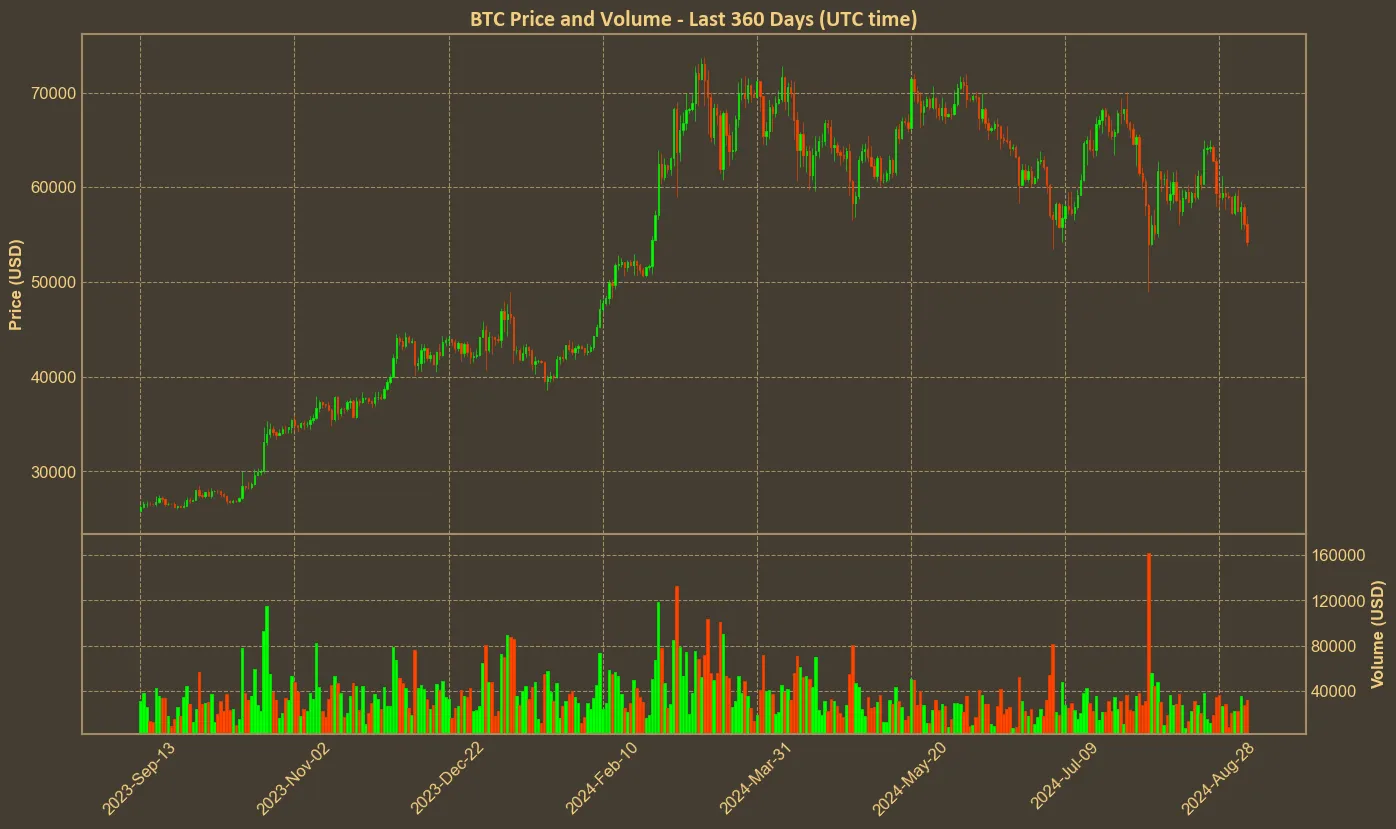Bitcoin, the leading cryptocurrency, has faced a significant price dip recently, sparking concerns among investors and market analysts. Initially, Bitcoin fell from $56,500 to $55,500 but quickly rebounded near the $57,000 mark. However, this recovery was short-lived, as both Bitcoin and the broader cryptocurrency market experienced a sharp decline shortly after.

What’s Behind the Drop?
The key driver behind Bitcoin’s recent price fall is the disappointing U.S. jobs report for August 2024, which revealed lower-than-expected job growth. This underwhelming data has intensified fears of a potential recession. Bitcoin, often regarded as a risk asset, historically reacts strongly to major economic indicators. The weak jobs report has raised concerns about the state of the U.S. economy, prompting a sell-off across risk assets, including Bitcoin.
Bitcoin wasn’t the only asset affected. With the exception of Toncoin, nearly every major cryptocurrency saw significant declines. The U.S. stock market also took a hit, with the S&P 500 losing over 1%. Additionally, big tech companies, known as the “Magnificent 7,” are all in the red, with NVIDIA suffering a particularly notable 4% drop. Interestingly, this did not cause AI-tokens to significantly drop this time.
The connection between cryptocurrency and macroeconomic indicators underscores how vital these external factors are to Bitcoin’s valuation. This relationship has become even more pronounced recently, as Bitcoin and Ethereum are now available to investors through ETFs. Over the past few days, movements in the stock market have been influencing crypto prices, and this trend is likely to continue. Investors will be closely watching the Federal Reserve’s decision on September 18 regarding potential interest rate cuts, which could have further implications for the markets.
Investor Sentiment and Market Implications
Investor sentiment towards Bitcoin remains cautious. The Fear and Greed Index has dropped to 22, signaling “Extreme Fear.” Despite this, Bitcoin continues to fight to stay above key support levels. Unlike previous market cycles, Bitcoin’s price movements are increasingly tied to traditional financial markets, making it critical for investors to monitor broader economic trends.
Amid the current volatility, it’s important to remember that Bitcoin’s fundamentals remain unchanged. For those with a long-term view of cryptocurrencies, these short-term declines may simply represent a minor storm in Bitcoin’s larger journey. Despite the recent downturn, Bitcoin is still up 112% from the previous year, offering perspective on its overall growth trajectory.





